How difficult is it to build a world-class research facility in the Middle East? Kit Chapman investigates
In 2000, a group of researchers sat dejected at a dinner party in Amman, Jordan, when a man in a jogging suit knocked at the door. The newcomer, fresh from his daily exercise, had been invited by the host to listen to the researchers’ problem.
For decades, the scientists explained, they had been trying to convince the governments of the Middle East to put aside their differences and build a particle accelerator together. Now, with all parties in agreement, they couldn’t find a place to build it. The jogger listened, nodded and pulled out his phone.
The next morning, the scientists found they had an audience with King Abdullah II of Jordan, who agreed to donate the land. The jogger was at the king’s side, now dressed in full Bedouin robes: it had been Prince Ghazi Bin Muhammad, the king’s cousin and adviser. His arrival was just one of the quirks of fate that led to building the Sesame synchrotron – a project so tricky to realise its users say it’s a miracle it exists at all.
Atoms for peace
Sesame – the Synchrotron-Light for Experimental Science and Applications in the Middle East – sits 20km north west of the chaotic streets of Amman, amid the rolling, scrub desert hills of the East Bank of the Jordan river. It’s a small research site, with only a modest guest house and courtyard next to the synchrotron building itself. Behind, a solar power plant will eventually make it the first light source to run entirely on renewable energy. The facility opened in 2017 and it has two beamlines currently in operation (one x-ray, one infrared), with space for seven more. But the real wonder is the unusual bedfellows it has bought together: Bahrain, Cyprus, Egypt, Iran, Jordan, Pakistan, Palestine, Turkey – and Israel.
‘After the peace treaty between Israel and Jordan in 1994, there was an effort coming from several Israeli scientists to find ways to collaborate [with other countries] through science,’ explains physicist Roy Beck-Barkai from Tel Aviv University in Israel. ‘There was a thought about making a big instrument for scientists to come together, in the same spirit of how Cern came about after the second world war.’
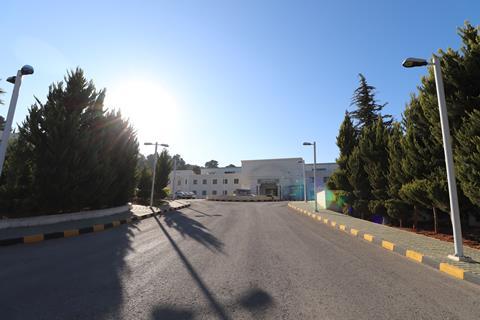
The need for a synchrotron was clear to politicians from the outset, Beck-Barkai says. ‘It’s a win–win situation. And politicians can understand that – even when Israel and Iran are in the same room.’ All countries in the Middle East had seen a brain drain, as skilled workers migrated to regions where facilities were already in place. Some countries, such as Iran, couldn’t access existing facilities in the US due to trade sanctions against them. And, scientifically, there were also experiments that couldn’t be done elsewhere. ‘We are very lucky to have a lot of archaeology in the region,’ Beck-Barkai says. ‘And if you want to do something on mummies, or on pieces from the Dead Sea, the costs of insurance and transportation need to be taken into account. In many cases, just travelling by car [from Israel to Jordan] is an advantage!’
In 1997, scientists met in the Italian city of Turin to agree the region needed a light source, and Herwig Schopper, a former director general of Cern, was appointed chair of the oversight committee. Soon Unesco was involved, its director-general personally backing the project. Yet despite the interest, political ill-will ran deep. Morocco, Iraq, Saudi Arabia and Yemen all refused to join the community – they wanted the science but weren’t willing to work with some of the member states.
‘There was always huge doubt that it would come to life,’ says Gihan Kamel, a beamline scientist at Sesame who has been involved in the project since 2004 as part of the Egyptian delegation. ‘We live in this region and see what’s going on. But that’s why it was important to build the community that believes in this place before construction. It’s a huge motivation for these countries to work together.’
The project faced several challenges immediately. The first was location. Although Iran offered space, it wouldn’t have been possible to grant visas to many of the facility’s potential users. Cyprus was also considered, but its ministers decided to fund the Miss Universe beauty pageant instead. Eventually Jordan became the preferred site, leading to the unusual dinner party intervention.

The next challenge was cost – building an entire synchrotron was too expensive. Sesame managed to secure an old synchrotron from Germany, Bessy I, but the scientists realised that a second-hand system wouldn’t meet Sesame’s goals. ‘If I’m working on a third-generation synchrotron, why would I go back to a first- or second-generation show?’ says Kamel. ‘You need a centre of excellence to stop a brain drain … you have to be innovative, otherwise your community will keep dropping their proposals.’ After further delays, additional funding to upgrade the machine was secured. Currently the facility uses stations donated from Diamond Light Source in the UK and a building donated by Italy, and its beamlines are bankrolled by Germany and the European Union. Indeed, of the US$98 million cost to build Sesame, around $50 million came from funding outside the region.
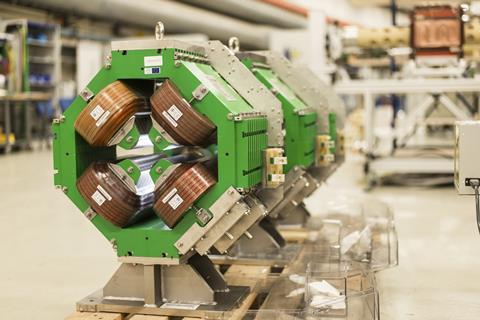
Yet even with the community united, location agreed, and machine in place, there were still hurdles to overcome. In one tricky meeting, Schopper found himself in a phone conference with Israeli minsters and Palestinian leader Yasser Arafat, trying to agree what Palestine would be called in the official Sesame documents. Both sides agreed to the compromise ‘Palestinian authorities on behalf of the PLO’ – only for the wound to reopen years later when Unesco changed its policy and recognised Palestine as an entity. Sensibly, the Sesame council agreed it was too politically sensitive to change things.
The problems kept coming. In 2010, two Iranian scientists involved in the Sesame project, Masoud Alimohammadi and Magid Shahriari, were killed in separate terrorist attacks. This prompted accusations they had been executed by Israel’s Mossad intelligence agency to curb Iran’s nuclear programme, threatening to derail the country’s participation in the project. Then, in 2013, a freak snowstorm hit the region just as the synchrotron building was under construction. ‘The roof collapsed,’ Kamel recalls. ‘That made us feel like even nature wasn’t happy with us! It took about a year for the roof to be replaced.’
The facility built, there was still one last task: there were no staff in the region trained to operate it. Fellowships were offered to scientists to visit existing synchrotrons around the world, and experts working in other countries were recruited. Among them was Kamel, who moved from a research facility in Italy. ‘I took this position because it’s been a long journey,’ she says. ‘The other reason is that women have problems with gender balance in science. So I thought I’d drop an application and say “Hey, we’re here!” Then I got accepted – and realised the size of the challenge ahead.’
Builds with benefits
Sesame has now been running for two years. Perhaps fittingly, its first experiment was the investigation of human remains from the ruined city of Petra about 250km away, tying the modern facility with the ancient heritage of the area. And yet even now its existence is far from certain. Until the facility’s solar power plant came online in February 2019, experiments were limited by the price of electricity in Jordan. The switch reduced monthly power costs from $440,000 (£340,000) to $18,000, but funding is still precarious, as some countries can’t send their financial contribution due to international economic sanctions. ‘Some of the members are still working on promises,’ admits Giorgio Paolucci, Sesame’s scientific director. ‘We can’t work on promises.’ In some years, Sesame only gets 40% of the funding required. ‘It’s a miracle that this thing exists, and a lot of what we are able to do is because others give money. But sometimes we have to ask how we’re going to pay next month’s salaries. We’re doing good science, publishing in good journals, but it’s still a risk.’
Sesame’s userbase is still small but growing, from 55 proposals of which 24 were granted in 2017 to 103 proposals with 55 granted in 2018. And while its full potential will only be seen in the coming years, similar ‘big science’ projects beyond the US and Europe have already reaped the benefits of making the investment.
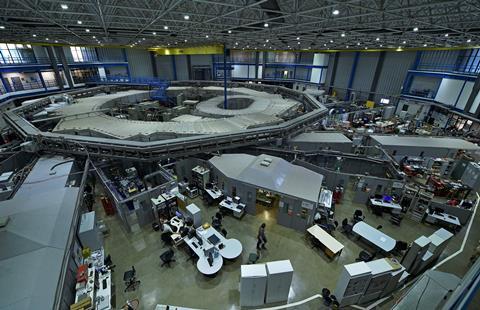
In the 1980s, Brazil realised it needed a large-scale science project or risk losing its scientists to the US or Europe. ‘We wanted the challenge of a big science project but use for all groups. A synchrotron was the perfect way,’ says José Roque da Silva, the former director of the Brazilian Synchrotron Light Laboratory (BSLL). Almost immediately, the Brazilian team faced a backlash; the country’s brain drain meant those performing synchrotron experiments had already headed elsewhere, and the nation’s universities worried the project would become a folly. ‘Why build this with no users? There was a fear that the project would draw all the money. People didn’t believe it would be a national lab,’ da Silva says.
The concerns were unfounded. By the time the BSLL was finished in 1997, it had 200 users ready and waiting. ‘Today, after 20 years, we have 6000 users,’ da Silva says. ‘They aren’t coming every day, but the community is of this magnitude.’ The project has been so successful da Silva is now leading construction of Sirius, a fourth-generation light source for Brazil, which will be among the most advanced facilities in the world once construction is complete.
The challenge, da Silva says, is that even though the benefits of a synchrotron appear clear, producing data to back up such big science projects isn’t straightforward. ‘That’s a very interesting question. We’re trying to get data, because we need a control – one that uses a synchrotron, one that doesn’t – and we don’t have one! We can’t say that groups using the synchrotron have higher impact. But if we hadn’t built [BSLL], we would not be able to build one of the first fourth-generation synchrotrons, because we would not have had a mature community of users and trained technical staff, and scientists directly connected to the synchrotron project.’ BSLL has also built ties with the private sector, and has seen visits from international groups, reversing the brain drain seen in previous decades. ‘If we have researchers from Brazil engaging with the wider international community, [the synchrotron] is a success,’ says da Silva. ‘But it’s a long-term thing – it’s a marathon.’
Learning to surf without an ocean
Sesame coming online means that Africa is the only habitable continent without a synchrotron of its own. According to a Unesco report, all countries in sub-Saharan Africa combined produced around 20,000 scientific papers in 2014 (9309 from South Africa alone) – fewer than Poland (23,498). Without a big science project, it’s likely that this scientific gap between Africa and Europe, Asia and North America will continue to grow. It’s a problem that researchers are hoping to correct with plans for an African light source.
As with Sesame, the planned African synchrotron has received backing from around the world, says Tabbetha Dobbins, a professor at Rowan University in the US state of New Jersey. Dobbins has been involved in the project since 2014, when she heard about the initiative at the National Society of Black Physicists’ annual conference. Already an experienced synchrotron user, Dobbins had chosen certain academic positions during her career specifically to have access to a synchrotron, and saw exactly why a facility in Africa was so essential. ‘If you were to live near the ocean you might get to join the surfing community, as there’s always a group of people learning how to surf. I never lived near the ocean, so I never learned how to surf,’ she says. ‘You can have institutions where people are doing research and never become a user at the synchrotron [because it’s too far away], even though these techniques would give them answers that would be extremely valuable.’
The African Light Source steering committee is taking steps to ensure nations buy in to the project – including identifying a suitable home for the facility. ‘The main objective is that every country understands that having a large-scale facility like this is going to be a huge benefit for the continent,’ Dobbins says. ‘There are educational benefits. There are industrial collaborations that will come to the region. The main task is getting everyone to understand that [a synchrotron] is going to benefit everyone.’
We need to have more optimism and more belief in ourselves. Science can do miracles
As with Sesame, an African light source faces major geopolitical problems if construction is to go ahead. Many potential member states can’t afford to contribute and need to prioritise other projects such as basic healthcare and sanitation; no language is universally spoken, so all documents are currently written in English, French and Portuguese; and, unlike Sesame, there are huge distances involved, compounded by countries with established scientific infrastructure, such as South Africa, being located at the extremes of the continent. ‘When I get ready to go to the light source in Chicago from New Jersey, I have a flight of about two and a half hours,’ Dobbins says. ‘If someone wanted to go from South Africa all the way up to the north coast, they would be in flight for about 10 hours. It’s six hours from Nigeria to South Africa alone. But it’s still a better situation than having to fly to Europe.’
Other problems are more easily solved. Already, students from across Africa are being sponsored to visit existing synchrotron facilities such as the Stanford Synchrotron Radiation Light Source, in the hope of ensuring trained staff are ready when the facility goes ahead. And Dobbins is under no illusion how long that might take. ‘There are 30 or 40 light sources in the world. For Sesame, from the time we start talking about it until the time of the first beam was 20 years. If we start that 20-year-clock in 2014, when the steering committee for the African light source first came together…’
And yet even if the African synchrotron is still over a decade away, Sesame and Sirius show that, if the will is there, such big science projects can come together. If you need proof, Kamel says, you only need to look around the Sesame cafeteria, where scientists from Cyprus and Turkey, or Israel and Iran, are in free discussion. ‘They’re sitting around chatting, having biscuits and coffee. But they’re talking about science, about tomography, infrared, x-rays, a unique language that everybody here understands.’ Science has pushed past politics to benefit everyone. ‘We need to have more optimism and more belief in ourselves,’ Kamel says. ‘Science can do miracles. And Sesame is a miracle that we already have.’
Kit Chapman is a science writer based in Southampton, UK
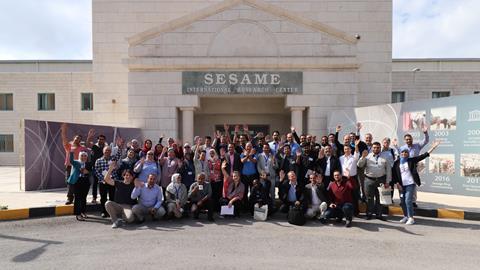

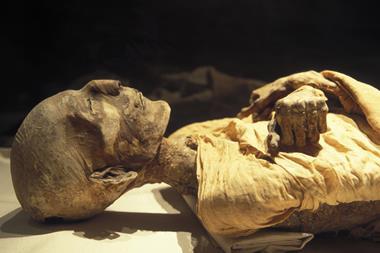
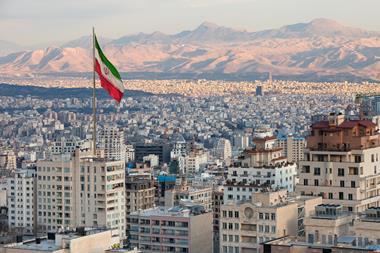









No comments yet